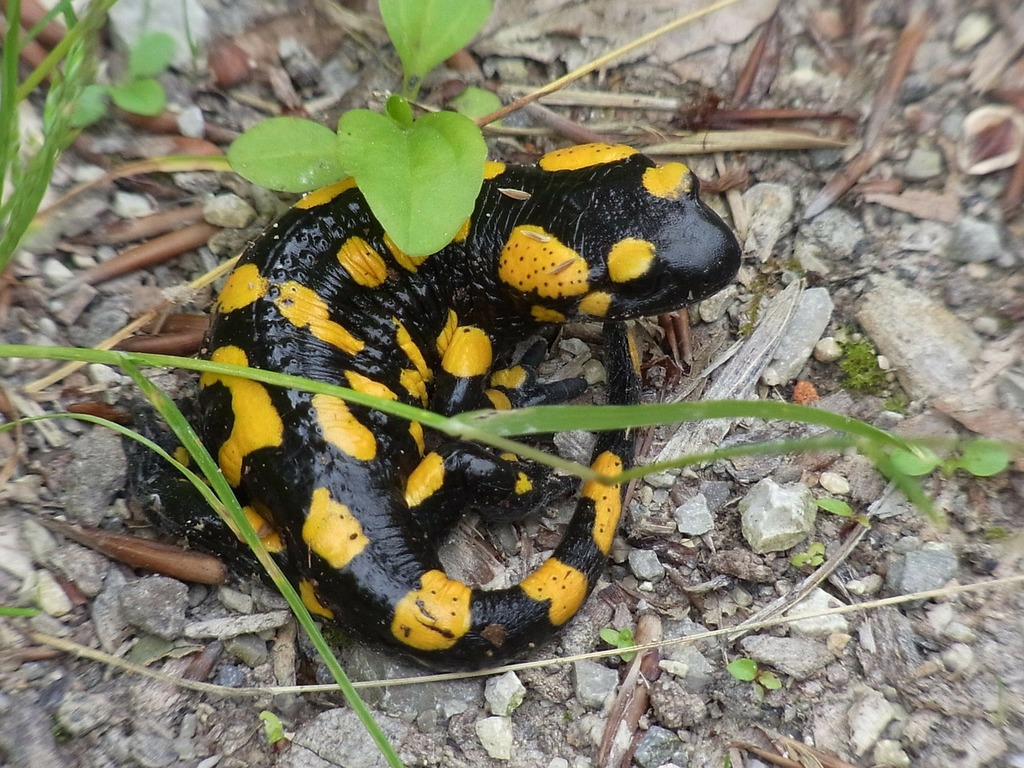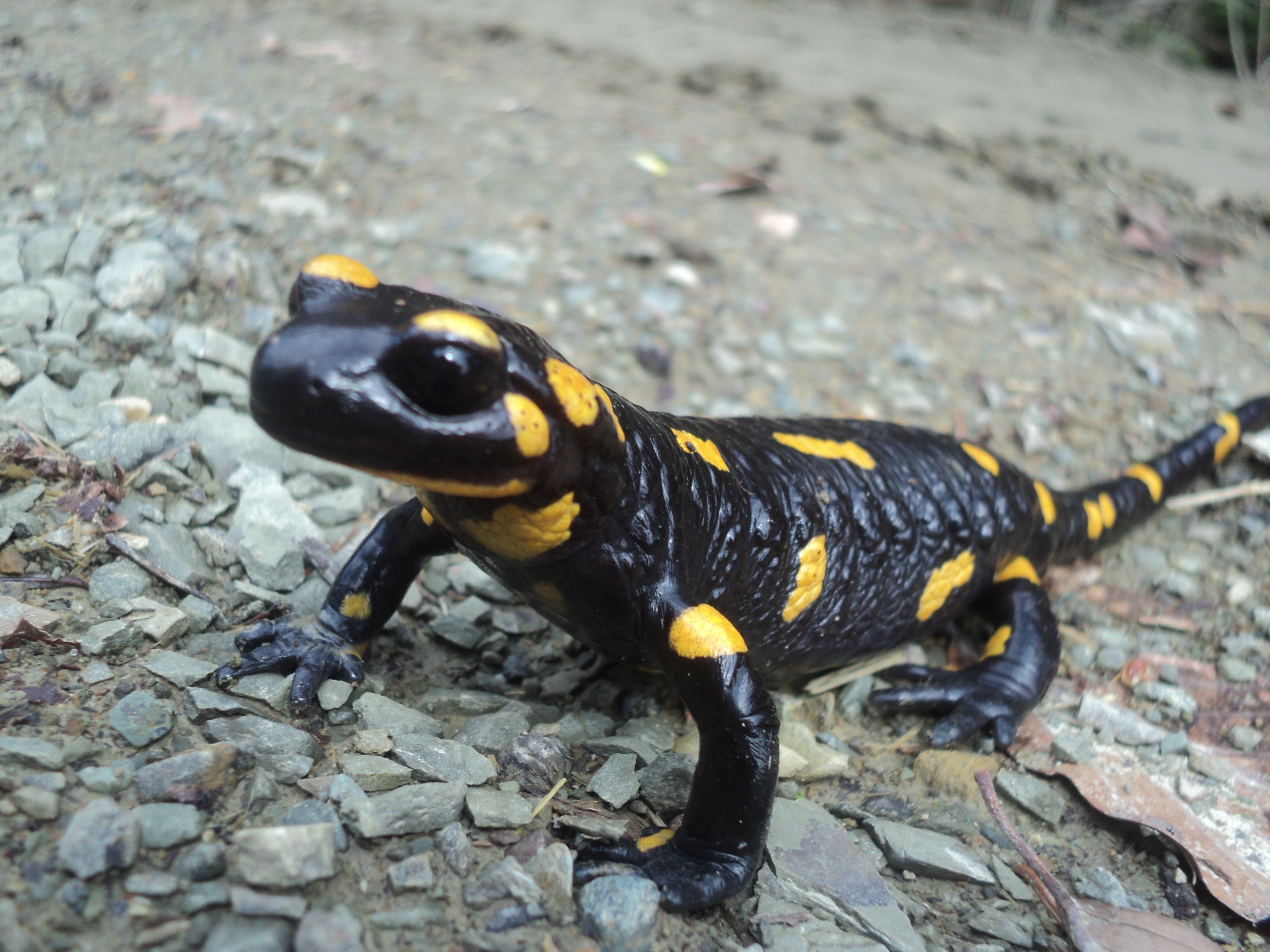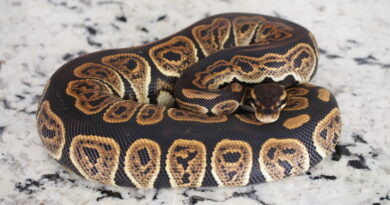The Complete Guide to Keeping a Pet Fire Salamander
About Fire Salamanders

The fire salamander is an intriguing amphibian species known for its vibrant yellow and black coloration as well as its ability to withstand heat and fire. In this article, we will explore the unique characteristics and behavior of fire salamanders, their habitat and distribution, as well as their diet and reproduction. Additionally, we will delve into the cultural significance of fire salamanders in various myths and legends, and the conservation status of this fascinating species. Join us as we uncover the mysteries surrounding these enigmatic creatures and gain a better understanding of their place in the natural world.
Benefits of Keeping a Pet Fire Salamander

The Fire Salamander is a stunning and eye-catching pet to keep, with its bright yellow or orange markings contrasting against a glossy black body. Their striking appearance makes them a popular choice for reptile enthusiasts. Additionally, Fire Salamanders are low-maintenance pets, as they require minimal care and can adapt well to terrarium life. This makes them suitable for beginner reptile owners who want a visually appealing and easy-to-care-for pet.
In their natural environment, Fire Salamanders are known for their secretive behavior, often hiding under logs and rocks. They are nocturnal creatures and prefer a quiet and dimly lit environment. Their diet consists mainly of small invertebrates such as insects, worms, and snails.
When housing and caring for a pet Fire Salamander, it is important to consider factors such as enclosure size, temperature requirements, and feeding habits. A spacious terrarium with hiding spots and a moist substrate is essential for their well-being. The temperature should be kept cool, between 60-70°F, and a consistent supply of small invertebrates should be provided for their diet.
Overall, the Fire Salamander makes for a captivating and low-maintenance pet, ideal for reptile enthusiasts of all levels.
Finding the Right Salamander

Finding the right salamander to keep as a pet or to study in the wild can be an exciting and rewarding experience. With over 500 different species of salamanders, each with their own unique characteristics and habitat preferences, it’s important to carefully consider your needs and the needs of the animal before making a decision. Whether you’re a beginner looking for a low-maintenance pet or a researcher interested in a specific species, understanding the factors involved in finding the right salamander is essential.
Habitat and Environment:

When finding the right salamander, it’s important to consider the natural habitat and environment of the species you are interested in. Some salamanders require a moist and humid environment, while others prefer drier conditions. Understanding the specific habitat requirements of the species you are interested in will ensure that you can provide the necessary living conditions for the salamander to thrive.
Diet and Feeding:

Different species of salamanders have varied diets, including insects, small invertebrates, and even other salamanders. Understanding the specific dietary needs of the species you are interested in is crucial for providing proper nutrition and ensuring the salamander’s well-being.
Licensing and Regulations:
Before acquiring a salamander, it’s important to be aware of any local or state regulations regarding the ownership and care of these animals. Some species may require permits or licenses, and it’s essential to comply with these regulations to ensure the ethical and legal treatment of the salamander.
Where to Find a Pet Fire Salamander

If you’re looking to find a pet fire salamander, there are a few options to consider. Local pet stores that specialize in reptiles may occasionally have fire salamanders available for purchase. Additionally, online reptile breeders and sellers can be a convenient option for finding a fire salamander as a pet. Reptile expos are another place where you may come across reputable breeders or sellers offering fire salamanders for sale.
It is crucial to find a reputable and experienced breeder or seller when looking for a fire salamander. This ensures that the salamander has been properly cared for and bred in a healthy and ethical manner.
Before purchasing a fire salamander, it’s important to conduct thorough research and consider the specific needs of this unique pet. This includes understanding their habitat requirements, diet, and any special care considerations. Potential owners should also educate themselves on the laws and regulations surrounding owning a fire salamander as a pet.
In conclusion, when looking for a pet fire salamander, potential buyers should consider local pet stores, online reptile breeders, and reptile expos, while also prioritizing finding a reputable seller. Thorough research and consideration of the specific needs of a fire salamander are crucial before making a purchase.
Doing Proper Research Before Buying a Pet Fire Salamander

Before purchasing a pet fire salamander, it is crucial to understand their specific care requirements and housing needs. Fire salamanders are amphibians that require a tank of at least 20 gallons for a single adult, with a secure lid to prevent escape. The tank should have a damp substrate, such as coconut fiber or peat moss, to maintain humidity levels. A naturalistic vivarium setup with live plants and hiding spots is recommended to mimic their natural habitat.
Upfront expenses for a fire salamander include the cost of the tank, substrate, heating and lighting equipment, and securing a veterinarian experienced in amphibian care. The ongoing cost of feeding includes a diet of live insects and worms, which can add up over time.
Salamanders and newts are popular exotic pets due to their unique appearance and low maintenance. However, proper research is essential before purchasing one, as they require specific environmental conditions and care. Their popularity as pets also means there is a wealth of information available on their needs and behaviors, making it essential to do thorough research before committing to ownership.
The Difference Between Wild and Captive-Bred Fire Salamanders

Wild fire salamanders are naturally found in forested areas with access to water, while captive-bred fire salamanders are raised in controlled environments such as terrariums or vivariums. The behavior of wild fire salamanders may be more active and exploratory compared to captive-bred salamanders, which may exhibit more docile behavior due to their familiarity with their confined surroundings. In terms of habitat requirements, wild fire salamanders need ample space, hiding spots, and suitable temperature and humidity levels, whereas captive-bred salamanders may adapt to the conditions provided by their caretakers. Whichever species of salamander you choose, proper care is essential.
Captive breeding may impact the health and behavior of fire salamanders by allowing for controlled breeding to minimize genetic issues and can also lead to challenges such as stress from captivity. The benefits of keeping captive-bred specimens include reduced risk of diseases and parasites, as well as a greater potential for studying and raising awareness about the species. Responsible captive breeding can contribute to the conservation of wild populations by reducing the demand for wild-caught specimens and ensuring a sustainable population in captivity. Overall, responsible breeding practices are crucial for maintaining the genetic diversity and overall health of fire salamander populations.
Setting Up an Appropriate Home for Your Fire Salamander

A suitable terrarium for a fire salamander should be spacious enough to accommodate the small amphibian’s natural behavior. It should include plenty of hiding areas such as rocks, logs, and plants to provide a sense of security. Additionally, a shallow dish of fresh, clean water should be available for the salamander to soak in, as they need to stay moist to aid in their breathing process.
The ideal cage temperature range for a fire salamander is between 65-75°F (18-24°C). It is crucial to maintain the appropriate temperature to ensure the salamander’s well-being. Furthermore, the substrate should consist of moist soil and peat moss to keep the humidity levels in check. It is important to change the substrate regularly to prevent the build-up of bacteria. This will help in maintaining a healthy and clean environment for the fire salamander.
In conclusion, a suitable terrarium for a fire salamander should include hiding areas, fresh bathing water, the recommended cage temperature range, and regularly changed substrate to ensure the well-being of the pet.
Proper Care for Your Pet Fire Salamander

Fire salamanders are fascinating and unique pets that require special care to thrive in a home environment. These amphibians are known for their striking black and yellow coloration, making them a popular choice among reptile and amphibian enthusiasts. Caring for your pet fire salamander involves providing proper housing, diet, and environmental conditions to ensure their health and well-being. From setting up the perfect terrarium to understanding their feeding habits and handling requirements, there are many aspects to consider when caring for these captivating creatures. With the right knowledge and dedication, you can create a fulfilling and enriching life for your pet fire salamander.
Creating the Right Environment for Your Pet Fire Salamander
To create the right environment for your pet fire salamander, start with a suitable enclosure that provides ample hiding spots. Choose an escape-proof at least 20-gallon tank or terrarium with plenty of nooks, crannies, and spaces for your salamander to feel secure. Make sure you also provide some flat rocks for when your salamander seeks dry land.
Maintain a cool temperature range of 15-20C (60-68F) within the enclosure, as this mimics the natural habitat of the fire salamander. Use a thermostat to monitor and regulate the temperature as needed.
Include a shallow water dish with de-chlorinated water to ensure your pet has access to hydration. It’s important to regularly change the water to keep it clean and fresh.
The substrate in the enclosure should be naturalistic, consisting of materials such as peat, moss, leaves, cork bark, and rotting wood. This will provide a realistic and comfortable environment for your pet to thrive in. Plus, salamanders love hiding under driftwood or cork bark where it is moist and dark.
Ensure that the enclosure is escape-proof, as fire salamanders are adept at finding small openings.
By following these guidelines and providing the right environment in at least a 20-gallon tank, you can help ensure the health and well-being of your pet fire salamander.
What Do You Feed Your Fire Salamander?
Fire salamanders are opportunistic feeders, meaning they will eat anything that moves and is a small enough food item for them to consume. Generally, they are offered a variety of invertebrates such as mealworms, crickets, wax worms, tubifex worms, brine shrimp, or earthworms. It’s important to dust the food with a calcium supplement to ensure your pet receives adequate nutrition. Additionally, you can offer a variety of fruits and vegetables to provide your salamander with a balanced diet.
It is important to remove any uneaten food from your fire salamander’s terrarium as soon as possible. If left in the enclosure, the food will rot and produce bacteria that can be harmful to your pet. It is best to ensure that only enough food is offered to your salamander at each meal so that it can consume it all in one go.
In terms of handling, fire salamanders should only be handled with extreme caution. These animals are delicate and can be easily stressed, so it’s important to handle them carefully and minimally. When you do handle your pet, make sure it is supported at all times with two hands to avoid dropping or harming it .
Caring for your fire salamander requires dedication and patience, but with the right knowledge and resources, you can ensure a safe and enriched life for your pet. By following these guidelines, you can help create the perfect environment for your fire salamander to thrive in.
Common Diseases of The Salamander
When it comes to caring for your pet fire salamander, it is important to be aware of the common diseases and ailments that can affect them. The most common health problems include skin infections, respiratory infections, and parasites. It is important to observe your pet closely and seek veterinary care if any signs of illness or distress appear.
Skin infections can cause inflammation, redness, or skin lesions to the delicate skin of the fire salamander. These can be caused by bacteria or fungi that invade the skin and cause irritation or infection. Respiratory infections are caused by airborne bacteria entering the lungs, which causes difficulty breathing. Parasitic infections, such as worms, can be acquired through contact with other animals or from food sources.
In addition to these common diseases, fire salamanders can suffer from stress if their environment is not properly maintained. To ensure your pet’s health, keep the enclosure clean and provide a suitable habitat that mimics their natural environment.
Conclusion
Fire salamanders are an exotic addition to any home, but they require special care. By providing the right environment and following these guidelines, you can ensure your pet fire salamander is healthy and happy. Ensure that the enclosure is escape-proof and provide a variety of food items, including calcium supplements, to ensure your pet receives adequate nutrition. Lastly, monitor your salamander for signs of illness or distress and seek veterinary care if necessary. With the right maintenance and care, you can give your fire salamander the best possible life.





